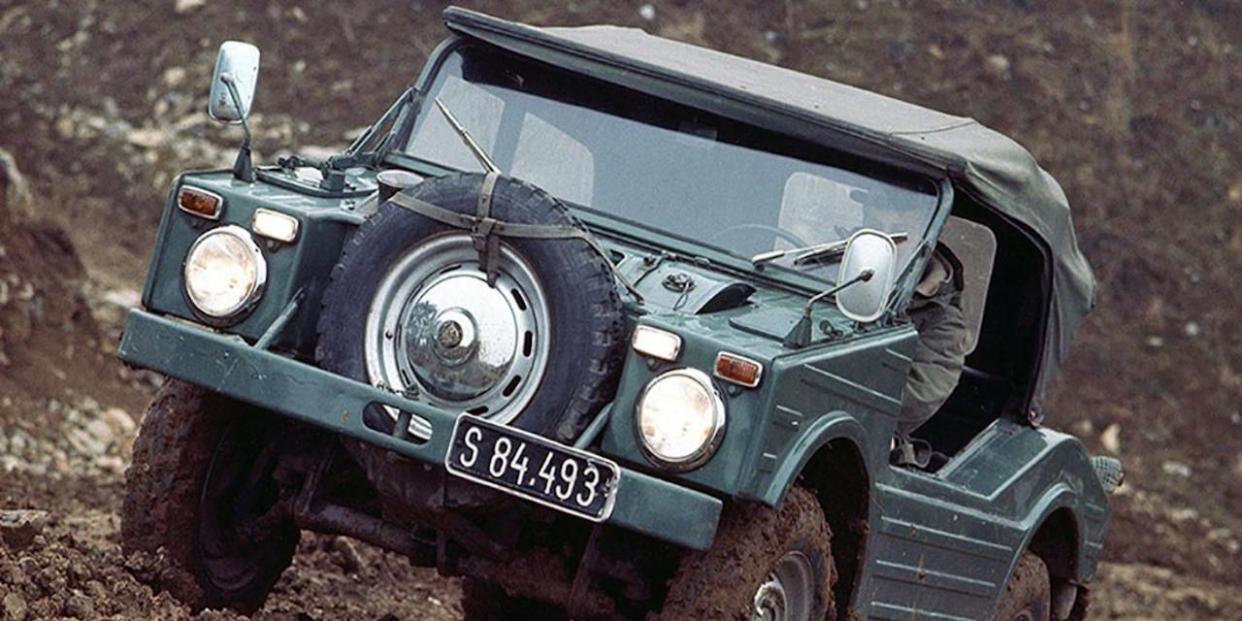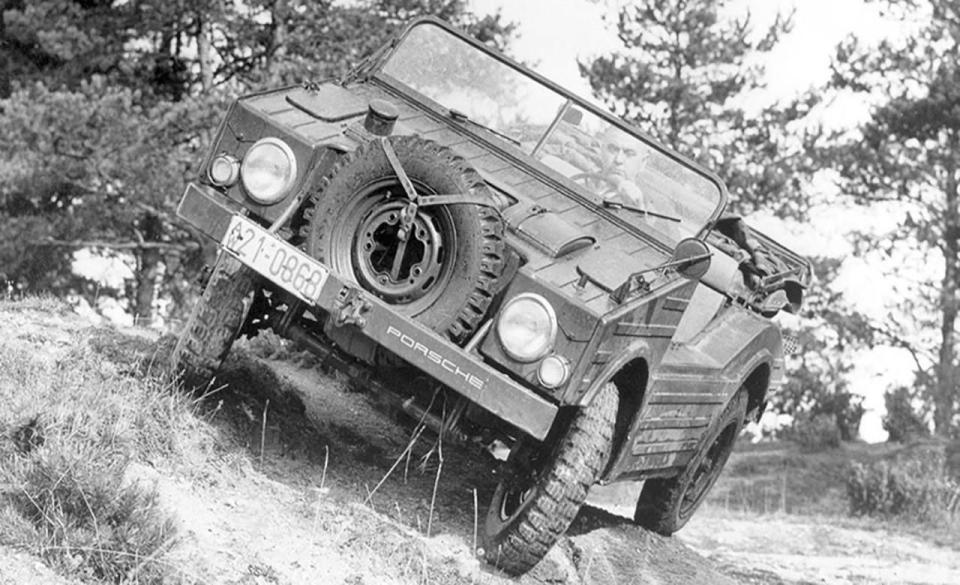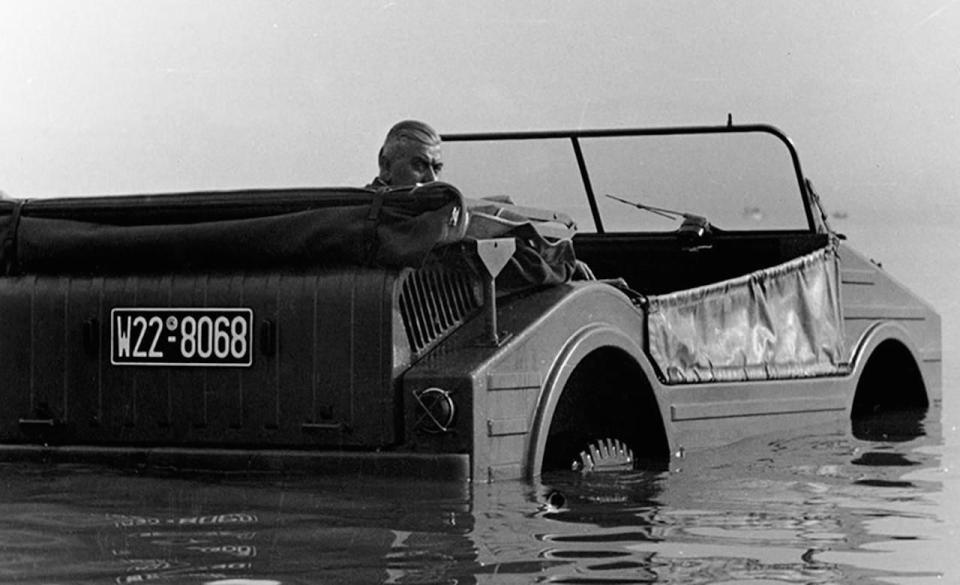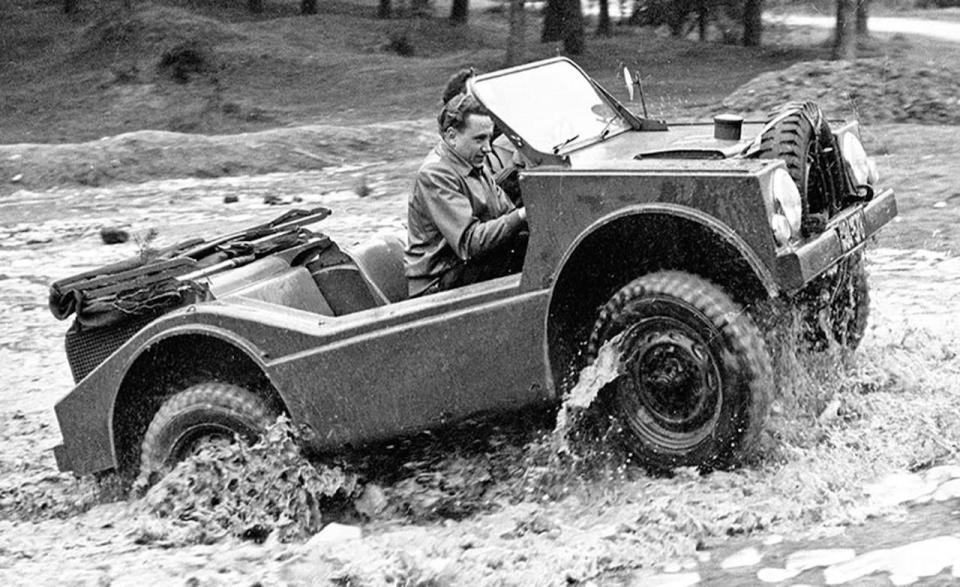That Time When Porsche Tried Building a Jeep

When West Germany was formed out of the ashes of Hitler's Third Reich in 1949, responsibility for its defense fell to the Western Allies. As tensions with Stalin’s Soviet Union only seemed to be increasing, it was decided that the Bundesrepublik Deutschland should be allowed to arm itself, leading to the formation of the Bundeswehr, a new German defense force, incorporating a new army, a revived Luftwaffe and a naval service simply referred to as Marine. The new service needed a Jeep, a role that had been largely performed during WWII by the Beetle-based Kübelwagen. DKW’s awkward-looking Munga won the competition to serve as light-duty mobility for German troops, beating out upstart sports-car manufacturer Porsche’s very interesting Jagdwagen.
Known by its Porsche type number, 597, the Jagdwagen (literally, "hunting car") pulled a page from the VW playbook. Where Ferdinand Porsche’s Kübelwagen borrowed heavily from his design for the VW Beetle, his son Ferry used his company’s 356 in much the same way. Given that the 356 itself can be seen as a radical evolution of the Beetle, it’s not a stretch to claim that the Kübelwagen and the Jagdwagen trace their roots to the same seed.
But while the VW had Nazi win-at-all-costs fanaticism and the industrial might of the state-owned KdF-Stadt at Fallersleben behind it, Porsche's company had only its Stuttgart works and contract production at Karmann available, likely making the Jagdwagen a more expensive proposition, especially from the perspective of a relatively new government in the midst of rebuilding a nation.

However, for the expense, there was real capability on offer. Its 356-derived, 50-horsepower flat-four engine was connected to a five-speed transmission, but that wasn’t the end of it. The front wheels were capable of engaging with the powertrain on the fly. Given all-wheel traction, a short wheelbase, and generous approach and departure angles, the Jagdwagen was capable of climbing a 65-percent grade.

Early prototypes, introduced in January of 1955, featured a very high sill without doors, giving the Jagdwagen a measure of amphibious capability, though its motorboat capabilities weren’t developed to the extent of the Kübelwagen’s fishy-flutter cousin, the WWII-era Schwimmwagen, which featured a propeller. Later prototypes from 1957 favored ease of ingress and egress over amphibious prowess, and were equipped with doors.
Weighing in at a mere 1874 pounds, the flyweight military vehicle offered impressive dynamics for its day, but the Bundeswehr ultimately determined that the nifty Jagdwagen and its Goliath co-competitor were less a match for the country’s needs than the simple, dumpy Munga from DKW. Nevertheless, it stands as the first Porsche-branded vehicle with four driven wheels. Porsche’s Stuttgart facility had assembled four-wheel-drive Schwimmwagens during the war, and had developed the all-wheel-drive Cisitalia Grand Prix car shortly after the war.
Of the 71 Jagdwagens constructed, roughly 50 examples are known to exist still. And today, of course, the remnants of DKW are part of Audi, Porsche’s sister brand in the Volkswagen Group portfolio. Porsche didn’t build another vehicle with four driven wheels until the all-mod-cons 959 of the 1980s, but today largely sustains itself building sport-utility vehicles such as the Cayenne and Macan, the latter of which is based on Audi’s Q5.
Without the Munga-contract money that flowed into Ingolstadt bolstering Auto Union’s postwar fortunes, today's Audi might never have existed, there might have been no Volkswagen Golf, and Porsche might well have wound up having to develop the Macan from scratch. Which, if we’re honest, probably would’ve been just fine with Porsche.

('You Might Also Like',)

